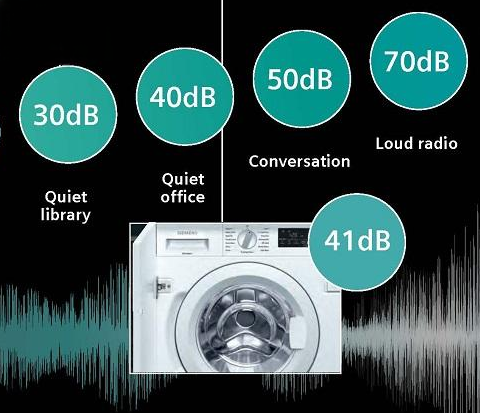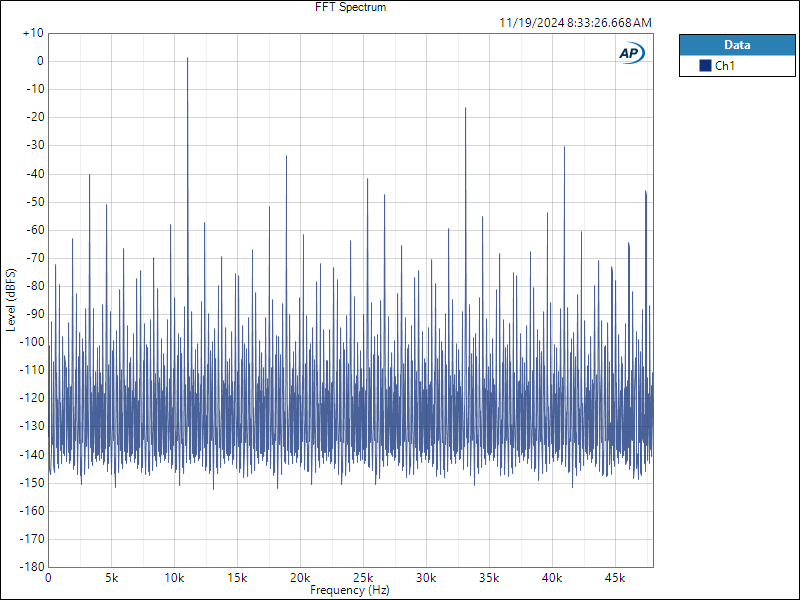Free shipping on USA orders over $700. Low-cost shipping to Canada.
Building an Audio MicroScope™
by Benchmark Media Systems February 02, 1997

By Allen H. Burdick
Introduction
Two inexpensive jack-mounted products from Benchmark Media Systems can be assembled into a very powerful test set we call The Audio MicroScope™. The Audio MicroScope™ is a tool to be used in setting up analog audio systems. Because of its extremely high gain capability, over 85 dB, it is particularly useful in hunting down signal interface problems, such as hum and buzz from RF interference, magnetic induction, and ground loops.
Devices Used
The first device in the test set is the MP-3, a single channel microphone preamplifier. The MP-3 is mounted on an XLR type jack and has a balanced input, variable gain from 26 to 65 dB, and a balanced output. It also has the ability to feed phantom power (with an external source of +48 V required) to a microphone. This can be useful even in this test set, particularly when testing microphone input cables. The performance of the MP-3 is excellent, with a 1 dB noise figure, a 2 kHz THD at A=40 dB of 0.005% and a bandwidth of greater than 200 kHz.
The second device used is the HPA-2. The HPA-2 is a high quality stereo headphone amplifier that has approximately 300 mA of very clean output capability per channel and is mounted on a 1/4" TRS jack. The HPA-2 is a improved headphone amplifier over the original HPA-1). Although the HPA-2 is a stereo device, in this application we will be using it as a dual channel mono amp. That is, both inputs to the HPA-2 will be connected to one half of the balanced output of the second product, the MP-3 microphone preamplifier.
Construction
Mount an MP-3, an HPA-2, in a project box along with a DPDT switch for power, and four 9 V batteries or a PS-1. Be sure to include a switch for the +48 V if it is used. The Audio Microscope™ will allow you to "look" at your system and find minute problems.
System Testing
To avoid damaging your hearing, since there is over 85 dB of gain available, you must be careful to have all normal audio fully removed from the path under test. Start with low gain and move cautiously upward as you begin the cleanup of the system.
Start at the beginning of the audio chain and listen to the microphone cable that feeds your console! Back terminate the wire, that is, replace the microphone with a 150 ohm carbon film or preferably a metal film resistor. Turn on phantom power, if available. Then turn up the gain and listen while you or someone else flexes the cable. If the cable is high quality, you will hear relatively little noise, if not, be prepared for a surprise. Next listen to the output of the first piece of equipment. It should be clean and free from hum. Move to the output of the next piece of equipment. Is the interconnect between the first two pieces of equipment free from mains-related hum and buzz? If not, work with the wiring and ground system, until they are. This, of course, assumes that the equipment by itself is clean, not always a safe assumption. Continue through the chain until the output of the final stage is just what you wanted.
Conclusion
You will find that the "Audio Microscope™" is one of the most valuable tools in your kit. In addition to using it with clip leads for direct connections, when used with a telephone pickup coil, Radio Shack Part # 44-533 it is most useful for doing a Magnetic Field survey of your equipment space. This piece of test equipment should be used hand in hand with the "A Clean Audio Installation Guide™" by Allen Burdick, a Benchmark Media Systems application note.
Also in Audio Application Notes

How Loud is the Distortion from Your Power Amplifier?
by John Siau August 08, 2025
Would you put a Washing Machine in your Listening Room?
If the answer is no, you may be surprised to discover that the distortion produced by your power amplifier may be louder than the noise produced by a major appliance.
Don't believe me? Take a look at Stereophile's test reports:
We selected 7 power amplifiers from Stereophile's top list of recommended amplifiers.
We took Stereophile's "THD+N vs. Power" plots for each, and replotted the data in a format that shows the loudness of the THD+N at the listening position.
The results are shocking!
Amplifier THD+N is louder than expected!
The distortion from your amplifier may be louder than a washing machine on the spin cycle, or it may be totally silent. How does yours perform? The answer is hidden in Stereophile's THD+N plots.
This application note reveals the hidden truth:
"The Distortion from your Power Amplifier may be Louder than a Washing Machine!"
I know, it sounds crazy, but this is what the measurements show!

Interpolator Overload Distortion
by John Siau November 20, 2024
Most digital playback devices include digital interpolators. These interpolators increase the sample rate of the incoming audio to improve the performance of the playback system. Interpolators are essential in oversampled sigma-delta D/A converters, and in sample rate converters. In general, interpolators have vastly improved the performance of audio D/A converters by eliminating the need for analog brick wall filters. Nevertheless, digital interpolators have brick wall digital filters that can produce unique distortion signatures when they are overloaded.
10% Distortion
An interpolator that performs wonderfully when tested with standard test tones, may overload severely when playing the inter-sample musical peaks that are captured on a typical CD. In our tests, we observed THD+N levels exceeding 10% while interpolator overloads were occurring. The highest levels were produced by devices that included ASRC sample rate converters.

Audiophile Snake Oil
by John Siau April 05, 2024
The Audiophile Wild West
Audiophiles live in the wild west. $495 will buy an "audiophile fuse" to replace the $1 generic fuse that came in your audio amplifier. $10,000 will buy a set of "audiophile speaker cables" to replace the $20 wires you purchased at the local hardware store. We are told that these $10,000 cables can be improved if we add a set of $300 "cable elevators" to dampen vibrations. You didn't even know that you needed elevators! And let's not forget to budget at least $200 for each of the "isolation platforms" we will need under our electronic components. Furthermore, it seems that any so-called "audiophile power cord" that costs less than $100, does not belong in a high-end system. And, if cost is no object, there are premium versions of each that can be purchased by the most discerning customers. A top-of-the line power cord could run $5000. One magazine claims that "the majority of listeners were able to hear the difference between a $5 power cable and a $5,000 power cord". Can you hear the difference? If not, are you really an audiophile?

